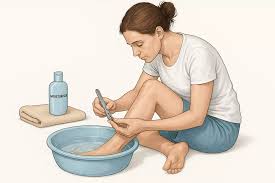Migraines surpass the usual discomfort of a standard headache and are characterized by moderate to severe throbbing pain that often affects only one side of the head. They may bring additional symptoms such as visual disturbances, nausea, vomiting, and pronounced sensitivity to light, sound, or certain smells. The intensity and duration of an attack can disrupt daily routines, making it challenging to work or engage in activities. Here is some information about what causes migraines and how to treat them:
Migraine Causes
The exact causes of migraines are complex, but they often involve a mix of genetic, biological, and environmental factors. Here are some common triggers:
- Family history: If you have close relatives who get migraines, you are more likely to experience them too.
- Brain chemistry: Changes in brain chemicals, especially serotonin, can affect blood vessels and lead to migraine pain.
- Stress: High levels of stress from work, family, or other life pressures can be a trigger.
- Physical exertion: Sudden, intense physical activity may trigger migraines for some individuals.
- Environmental factors: Changes in weather or barometric pressure can sometimes trigger a migraine.
- Sensory overload: Bright or flickering lights, loud noises, and strong smells are common triggers that can increase your risk of an attack.
Migraine Treatment
Relief and prevention are key to migraine management, with treatment plans tailored to each person’s needs. Specific medications or interventions chosen often depend on the frequency of migraines, the severity of attacks, and a person’s overall health. Pain-relieving medicines are designed to address symptoms at the start of an attack. These may include over-the-counter or prescription pain relievers, as well as specific medications developed for migraines. Preventive medications are used regularly and aim to lower the frequency and severity of migraine occurrences. These might include blood pressure medications, certain antidepressants, anti-seizure drugs, or other tailored therapies.
Identifying specific triggers and learning to manage them forms a key part of an effective treatment approach. Some people keep a migraine diary, tracking symptoms, timing, foods, sleep, and environmental changes that precede attacks. This can help clarify which factors are likely to trigger migraines and highlight areas for adjustment. Other treatments include:
Botulinum Toxin Injection
Botulinum toxin injections are sometimes recommended for those who experience chronic migraines. The procedure involves small injections around the head and neck every three months. The goal is to block pain signals and reduce the frequency of headaches. Treatment typically occurs in a clinical setting under the supervision of a qualified healthcare provider and may benefit individuals with persistent migraine issues.
Behavioral Therapy
Behavioral therapies offer a proactive strategy for migraine management, teaching new ways to respond to physical and emotional triggers. Cognitive Behavioral Therapy (CBT) guides you through understanding how your thoughts, emotions, and habits impact your experience of pain. By adopting new coping skills, you may better manage life’s stressors and reduce the frequency or severity of attacks. Biofeedback is a behavioral intervention that utilizes specialized equipment to help you track physical responses, such as muscle tightness, and develop relaxation techniques that can be used during a migraine attack.
Get Relief From Migraines Today
Identifying your unique triggers through careful tracking and reflection helps you manage your response to migraine attacks. Collaborate with your healthcare provider to develop a treatment plan tailored to your needs, whether that means trying medications, exploring behavioral therapies, or both. Schedule an appointment to discuss your migraine experience today.












